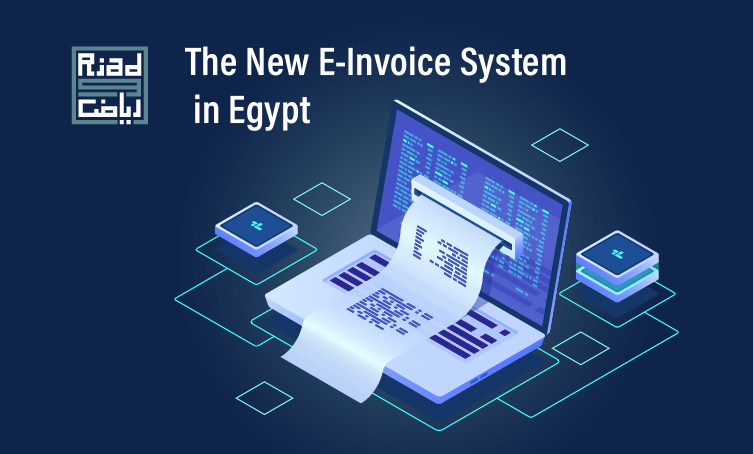
The New E-Invoice System in Egypt
Introduction
As part of Egypt’s digital transformation, the Minister of Finance issued Decree no. 188/2020 in March 2020 to require VAT taxpayers to issue e-invoices.
This Decree has delegated the Chairman of the Egyptian Tax Authority to determine the conditions, technical requirements and implementation phases of the e-invoicing system.
E-Invoice Definition
E-invoice is defined as an electronic document which proves the commercial transactions concluded between persons for the sale of goods and services. Such document has to meet certain requirements and should be signed electronically.
Objectives of the E-invoice System
The E-invoicing system aims to:
- Enforcing the digital transformation and tax e-system in Egypt.
- Providing the Tax Authority with appropriate tracking of concluded transactions.
- Allowing the verification of the information provided by persons under the e-invoice.
- Facilitating and expediting tax procedures, including the calculation and collection of taxes.
Application of the E-Invoice System
The Chairman of the Tax Authority announced four phases for the implementation of the e-invoicing system started in November 2020 and ends in December 2021.
Main Requirements of the E-Invoicing
Below are the main requirements for implementing the E-invoicing system:
- Obtaining a valid E-signature.
- Using the unified code of the goods and services as issued by the Tax Authority.
- Nominating a contact person who will be responsible for the company’s e-invoice system and provide the Tax Authority with his contact details.
Registration with the E-Invoice System
The registration of the taxpayers with the E-invoice system differs according to the following scenarios:
- Taxpayers who do not have ERP System:
They shall register themselves on the E-Invoice Portal. Only companies which do not have an ERP System can be registered with the E-Invoicing Portal. The website of the Egyptian Tax Authority provides a full guide on how to register in the E-Invoice Portal. - Taxpayers who have ERP System: They need to Integrate with the E-Invoice System, according to the technical guidelines provided by the Egyptian Tax Authority.
Main Features of the E-Invoice
The main features of the E-invoice are the following:
- It has a specific content and information.
- It shall be prepared and signed electronically using a valid e-signature.
- It shall be sent to the e-system, in due time, in order for the Tax Authority to check and verify its correctness and the validity of the e-signature. The Tax Authority will give the e-invoice a unique number as soon as it is reviewed and approved.
- It can be revoked by the seller within a period to be determined by the Tax Authority, provided that the buyer approved such revocation.
- It can be rejected by the buyer within a period to be determined by the Tax Authority.
Main Content of the E-Invoice
The E-Invoice shall include the following information:
General information
- Invoice number.
- Invoice issuance date.
- Taxpayer’s name, address and tax registration number.
- Buyer’s name, address and tax registration number (if any).
- Description of the sold goods or provided service and its price as well as the applicable tax rate and its calculated amount.
- Total amount of the invoice.
Specific information
- The unified code of the goods or services (as determined under the Unified Standard Code issued by the Tax Authority).
- In case the invoice is issued in foreign currency, the foreign exchange rate as announced by the Central Bank of Egypt on the issuance date of the invoice.
- The business code of the company and the code of the branch issuing the invoice.
- The buyer’s ID number in case the value of the invoice exceeds a certain amount.
For any inquiries, please contact Dr. Fatma Salah or Heba ElKady
